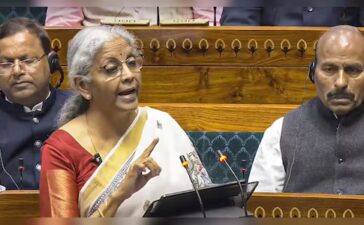Speech
Thankyou – it is a pleasure to be here. I am going to use my time to talk about global financial stability and the challenges we face today. But I am going to start with some theory. The reason is that there is an issue with financial stability in that the risks can take on a laundry list character, and a long list at that. This can leave a ‘take your pick’ mindset, and a sense that this is all too much, or that it is not sufficiently grounded.
So, bear with me for a short travel into theory, and then I will seek to put today’s big issues or at least some of them, into that context.
For me, the founding father of more developed financial stability theory was Hyman Minsky. His core argument was that money and finance matter together for understanding economies, and particularly for understanding susceptibility to stress, Unstable finance contributes to economic instability, and the institutional arrangements by which money and finance operate do matter. Capital and financial instruments are traded and have their prices determined in markets, and these are separate from, but linked to, the prices of current output in the economy. Financial practices change over time, and these changes can impact the behaviour of the economy. Economies can therefore oscillate between robust and fragile financial strictures, the latter being a contributor to financial crises. And, as a previous financial crisis recedes over time, it is not unusual to believe that a new era has arrived. In such conditions, Cassandra like warnings that nothing basic has changed and there is a financial breaking point that can have severe economic consequences are ignored.
One paragraph can’t do full justice to the breadth of Minsky’s thinking, but I believe the core of it is clearfootnote [1].
Before wrapping the theory part up, let me also set out some of the important work done by historians. Charles Kindleberger drew on case studies to point out that the connections between financial markets and macro economies extended beyond those running through money flows (the banking system), and they can operate via arbitrage in internationally traded commodities. Autonomous shocks can change investment opportunities prompting high spirits and an overshooting of equilibrium price levels. But over time such expectations of continuous asset price rises weaken and distress sets in. The movement out of liquid assets into the now overvalued illiquid assets reverses and, if precipitous, a crash or panic ensuesfootnote [2]. Kindleberger drew on Adam Smith’s observation that “when the profits of trade happen to be greater than ordinary, overtrading becomes a general errorfootnote [3]. And the rate of profit” is always highest in the countries that are going fastest to ruinfootnote [4].
More recently, Harold James has reminded us that although the Great Depression on both sides of the Atlantic is often associated with bank failures, there was a critical interaction with financial markets. The effect of this was to reduce the wealth and collateral available for corporations and individuals to borrow, which led to a reduced credit supply, forcing borrower liquidation of assets thereby pushing asset prices down further. This was the debt deflation of Irving Fisher and the credit channel of transmission of Ben Bernanke. Moreover, as James notes, surviving sudden crises requires extraordinary public policy measures to be used – such as short-run actions to alleviate long-run problems, even if on their own they are not compatible with long-run stabilityfootnote [5].
Enough theory and history. I hope though that you will understand why it matters. I am going to use the rest of my time to apply it to today’s world.
First of all, let me make an overall point. There is a tension in financial stability between the overall or macro-prudential approach and one that is more of a disaggregated list of stuff that could go wrong and cause a wider crisis. Macro-prudential policy has to stay focused on risks that could threaten the system as a whole, taking into account correlations, concentrations, interconnectedness and opacity. This macro-pru approach is more ambitious and harder to pull off. It can come and go in terms of the attention it gets, the cycle of which tends to be related to the incidence of crises. A good (or bad) crisis tends to provide a more macro focus for a time, but then as memories fade the list approach can come back to prominence. I believe we have to push against such a list-like tendency keeping our focus on the system-wide perspective, and the correlated, concentrated, interconnected and opaque positions that matter for the stability of the system as a whole. This is the spirit of Minsky and others, and it provides a firmer grounding. So, Message One, taking the macro-prudential approach matters, and yes it can be harder.
Onto the second message. Cassandra was fated by the god Apollo to utter true prophecies but not to be believed. The prophecies were of course not of the good sort. In financial stability speak she dedicated herself to one tail of the distribution. Somebody will of course say that she was ahead of her times, and thereby missed her vocation as a central banker. Let me borrow her mantle for a moment, in the context of Minsky’s argument that memories of financial crises recede over time and can be replaced by thoughts of a new era arriving. I can observe this happening with the global financial crisis fifteen years or so on. I do get people telling me that ‘you have solved that one so we can relax’. But the work I set out above on theory and history is timeless. So, let’s not fall into the trap of complacency. Yes, we must debate the right level of regulation, it cannot be assumed to be perfect, but let’s not confuse that with the timeless nature of the threat. That’s Message Two.
My third message is to pick up the theme that was at the heart of Minsky’s critique of Keynesian economics post-war, though not of Keynes himself, and is also reinforced by Kindleberger and James. This is that money and finance matter together because they interact and in so doing create instability. One of the blind alleys that this type of debate went along before the financial crisis was to see it only in terms of whether there were asset price bubbles or not. Ultimately that was not only a blind alley but a dangerous one too.
Since the financial crisis we have seen a change in the relative scale globally of bank and non-bank finance, with the balance shifting towards the latter. And so the focus of authorities has shifted, rightly, towards the latter too. You can see this in the work programme of the global Financial Stability Board. In one sense, we should not be surprised by this shift. We have upped the regulation of banks, reflecting the lessons of the crisis.
But then we should remember the focus of Minsky and others. The macroprudential risks of the non-bank sector have not originated from this shift, they have been there for well over a century or more. Kindleberger’s study of the 1873 panic affecting Berlin, New York and Vienna is a good illustration of thisfootnote [6]. The contemporary shift in the balance of intermediation towards non-banks makes such risks more pressing, but it should not be thought of as new. That’s Message Three.
The non-bank word and its interaction with the banking world – money and finance as Minsky put it – has evolved in ways that require us to look not just at regulation, but at two additional key components of our response as authorities, namely the tools of surveillance and the tools of remedy.
I will start with surveillance. The non-bank sector is very large and growing. It is disparate in nature, opaque in important places and the interlinkages are, unsurprisingly, therefore complex and hard to observe. In the banking sector we have developed post-crisis our stress testing tools. At their core, these are institution specific, though to leave it there would be a mistake and so we have developed cross-sector tools to capture system-wide risks. For example, where the actions of individual banks to restrict credit lead to a collectively worse outcome for the system.
For the non-bank sector and its interaction with the bank sector we have to focus on stress exercises that simulate the spread of stress and thereby seek to pick out the institutional points of weakness and lack of resilience, for instance in markets and infrastructures as well as the firms themselves. I think this is very much in the spirit of Minsky. At the Bank of England we are conducting our first System Wide Exploratory Scenario. It doesn’t claim to cover every risk in the system, you should be disbelieving if I said otherwise. It is more in the way of a flow test – simulate shocks, let them flow through the system and see what happens. We expect to report on the results by the end of this year. Message Four is that we need to develop more of these tools of surveillance of risks.
You will I am sure be pleased to know that my fifth point is the last. It covers the tools of response that authorities use in a crisis. As I noted earlier, Harold James has set out how surviving such crises requires extraordinary measures to solve short-run situations and alleviate long-run problems, but on their own such approaches may not be compatible with long-run stability. This can sound like an impasse, but I don’t see it that way. Central banks are the providers of liquidity of last resort to the banking system. That we should use this extensively in a crisis and be expected to do so was at the heart of Walter Bagehot’s stricture of the Bank of England in the 19th century. It remains a key tenet of how central banks should operate. There are at least three accompanying parts to operating the Bagehot approach in practice.
The first is that money is unique, it’s different from finance. It must at all times hold its nominal value, whereas the nominal value of finance (assets) should and will naturally vary. Second, the way money has developed within the discipline of holding its nominal value means what I call the singleness of money. Banking systems have developed so that money is made up of central bank money (the stuff we create) and commercial bank money (bank deposits). The singleness of money applies critically as the glue across both. This is why central banks need to be responsible for monetary policy and bank regulation. The third accompanying part is an assumption that if a central bank injects money into the banking system, it will naturally find its way to all the places in need, at a price of course. In other words, if there is a liquidity need in the non-bank world, we can reach it via the banks.
I think Minsky was not a dissenter from the first two propositions but was sceptical about the third. Moreover, Kindleberger used case studies to cast doubt on the third. In my view the modern growth of the non-bank sector has cast more doubt on the effectiveness of the third proposition. For a long time in history there have been emergency interventions to forestall financial stability problems in the non-bank world. But we are left trying to square a circle. Can we preserve the uniqueness of money as a feature of the banking system and intervene where needed to solve such financial stability problems in the non-bank sector?
Fortunately, I think the answer is yes. Money is unique and the relationship between central banks and the banking system is unique too. This was Bagehot’s point at a high level. Banks must have access to central bank liquidity on a standing basis – i.e. all of the time. To do otherwise is to ask for trouble. And this underpins the singleness of money which ensures that central bank and commercial bank money are fully aligned in nominal (and real) value terms. In normal times, that should take care of the needs of the non-bank sector because the liquidity should reach where it is needed via banks. But in times of stress it may not. To avoid a systemic crisis, and reflecting the growth of the non-bank sector, central banks should consider permanent emergency facilities for non-banks. But these should not be standing facilities, because the value of money is not the issue here. Non-banks cannot decide when they would like access to the central bank. Rather the central bank can trigger or activate these facilities if it senses stressed conditions and their possible economic consequences warrant such action. But these facilities are temporary in their availability and should be unwound and repaid as soon as possible. I think this deals with Harold James’s point about short and long-run consistency.
You may already be aware that at the Bank of England this is what we are doing, by putting into place emergency facilities for a range of non-banks which we consider exposed to the systemic risks that should call the use of such facilities into action. But to reiterate, these are not standing facilities of the traditional sort.
Minsky’s analysis is pertinent today as memories of the Global Financial Crises recede and the discussion moves on to putting more emphasis on growth and competition in economies and the role of finance in these objectives. To be clear, these objectives are important, no doubt about that. But we have learned from hard experience that we can only achieve them with a foundation of financial stability. There isn’t a trade-off. The best contribution we as financial stability policymakers can make to sustainable economic growth is to ensure that the financial system is resilient when shocks hit.
That foundation requires confidence in the nominal value of money and therefore it’s singleness. Money and finance are different and should be treated as such. Profits and some losses should be made as the normal state of affairs. We should not use regulation to limit these outcomes beyond enabling efficient markets with strong institutional foundations and well-established rules of the game. But as authorities, it is our job to intervene to prevent damage to the foundations of financial stability which could in turn compromise economic growth. Those interventions can be continuous in the sense of regulations or emergency and temporary where the threat is so great and costly that it would be inefficient to regulate constantly on the assumption that something on such a scale will happen more regularly. Most of the tail of bad outcomes is best dealt with by regulation, but the very extreme end can be better tackled by one off interventions. That is not a failure of regulation.
To sum up, I have five messages on financial stability. System-wide matters and should not disappear amid laundry lists. Second, we must heed Minsky’s warning that memories of financial crises past do recede. Message three is that we have seen a shift in financial intermediation towards non-banks – from money to finance if you like and this presents distinct challenges. Message four is that one of these challenges is the pressing need for new surveillance tools. And message five is that there is also a need for central banks to reconsider their liquidity provision tools to non-banks while not undermining the singleness and uniqueness of money.
Thank you.
I would like to thank Nathanaёl Benjamin, Colette Bowe, Sarah Breeden, Karen Jude, Zertasha Malik, Harsh Mehta, Rhys Phillips, Georgie Shelley, James Talbot and Sam Woods for their help in the preparation of these remarks.















